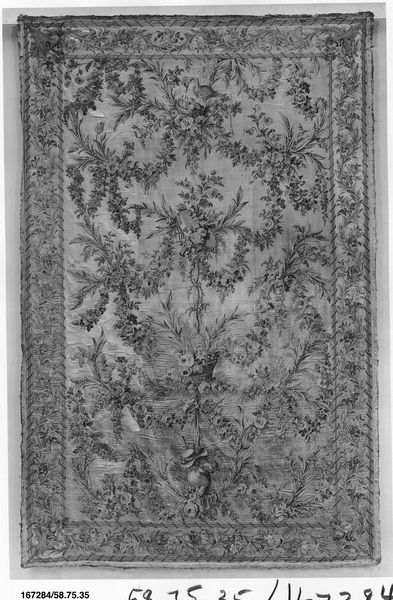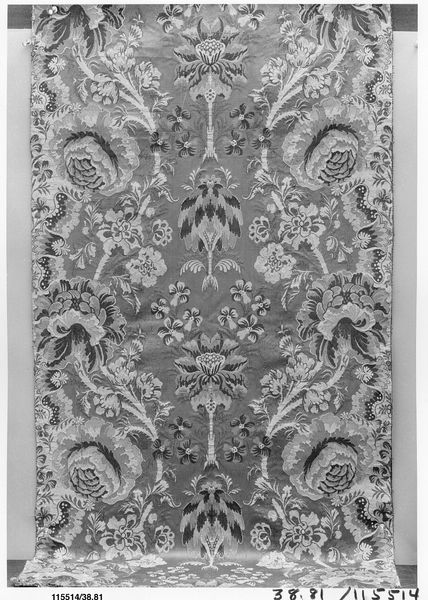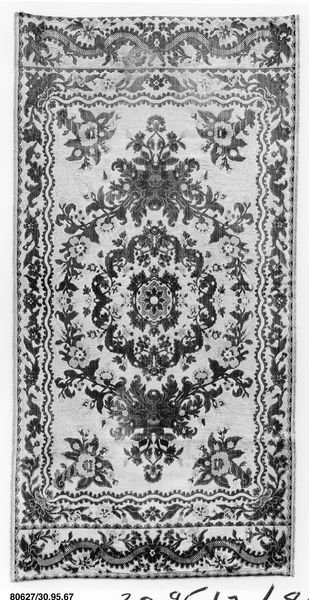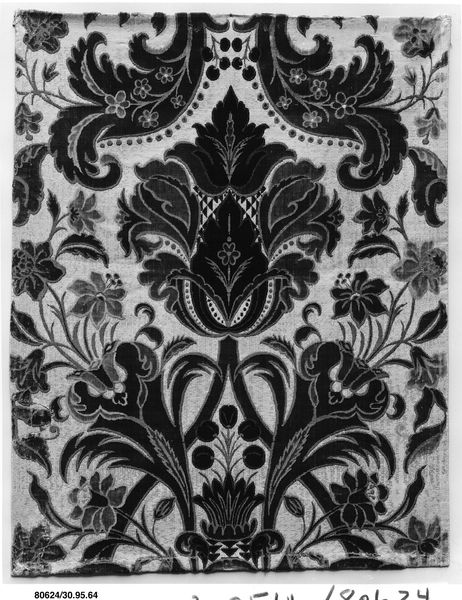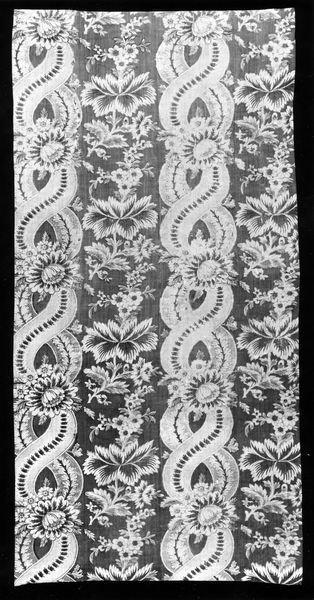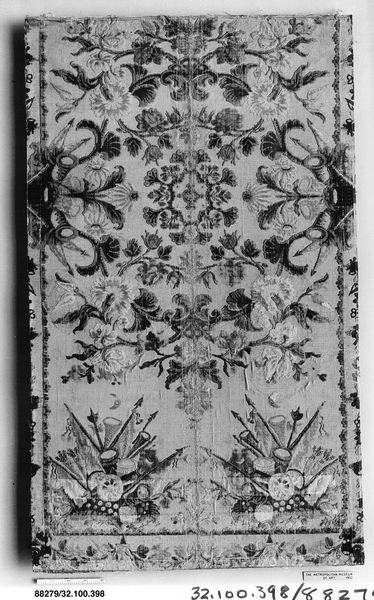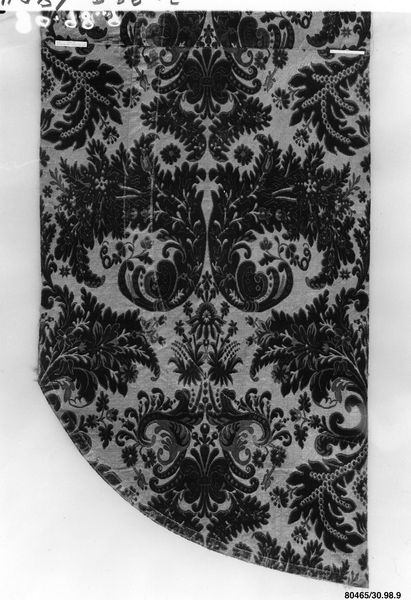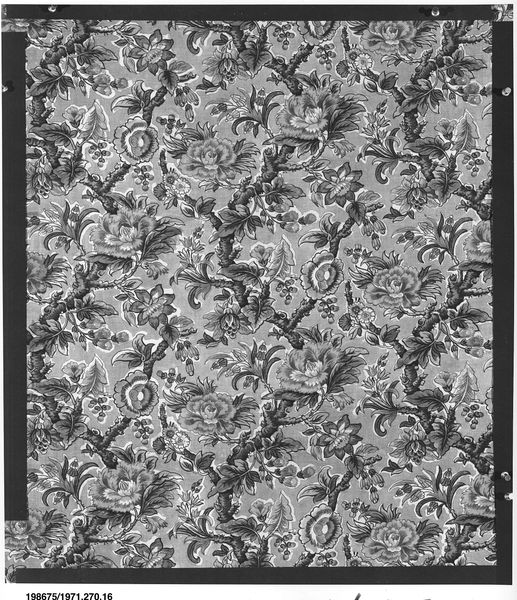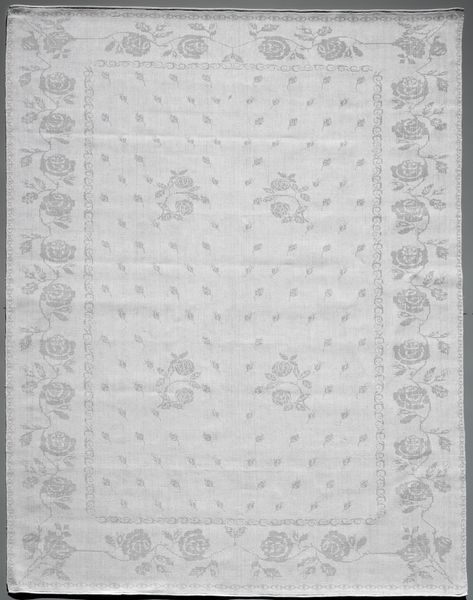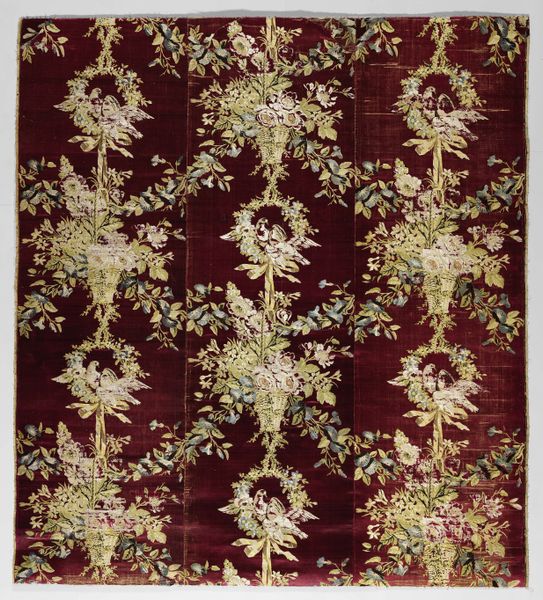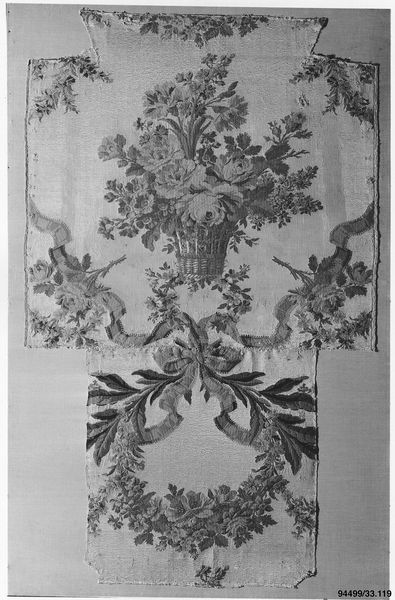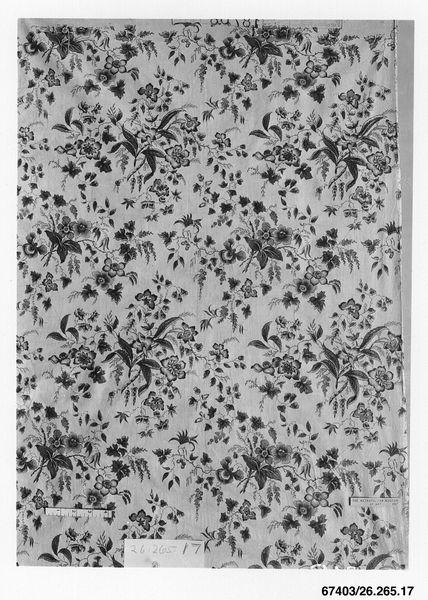
textile, sculpture
#
textile
#
sculpture
#
decorative-art
Dimensions: L. 47 1/2 x W. 20 5/8 inches (120.7 x 52.4 cm)
Copyright: Public Domain
Curator: What a fascinating textile. The museum attributes this "Piece" to the 18th century. It resides here at the Met, and shows an example of decorative art in the period. I'm struck by its tactile quality, even from this distance. Editor: Immediately, I am struck by the echoes of courtly aesthetics. I imagine gowns, elaborate draperies, or wall hangings destined for grand estates. It's a material declaration of privilege and the decorative excesses enjoyed by the aristocratic classes. Curator: Absolutely. If we delve deeper, we see a highly stylized floral pattern repeated throughout. The technique probably involved complex weaving methods, suggesting the high degree of specialization of labor at the time. One could speculate that access to textile arts played a role in gender inequality. It may be fascinating to discuss how textile access, production, and patterns impact representation and identities. Editor: Certainly. Floral motifs were potent cultural signifiers. While on one hand nature represented beauty and grace, these kinds of textiles in particular also point towards highly controlled gardens, nature curated by wealth. The very material signifies constructed ideals that privilege visual aesthetics above functional worth, revealing so much about the values inherent in social structures of the era. This in turn gives art critics space to challenge or reinterpret art to broaden accessibility and engagement for all social classes. Curator: True. Also, if this textile were employed for, say, the making of clothing, its physical constraints and weight would significantly impact the wearer's agency. What is lost and what is found when decorative art dictates function in human life? Editor: It is tempting to situate textiles such as this as beautiful yet static objects. However, by seeing this piece within the politics of production and display, it transforms into a site that exposes past social inequalities and stimulates questions for current concerns. It shows how aesthetics are inextricably linked with systems of wealth and privilege, inviting conversations on topics ranging from cultural appropriation, diversity and equity, and more. Curator: An intricate weave of threads, quite literally. We began with just an aesthetic consideration, yet arrive now at intersections of class, power, and identity—as if that textile is itself woven together with so many elements! Editor: Precisely! The art piece functions almost like a springboard. What begins as aesthetic experience invites a multilayered analytical exploration of societal context and ethical debates.
Comments
No comments
Be the first to comment and join the conversation on the ultimate creative platform.
